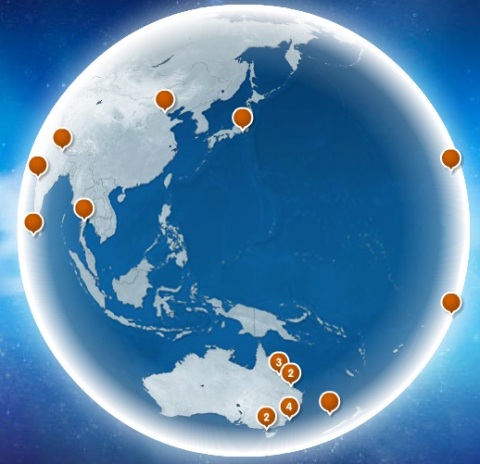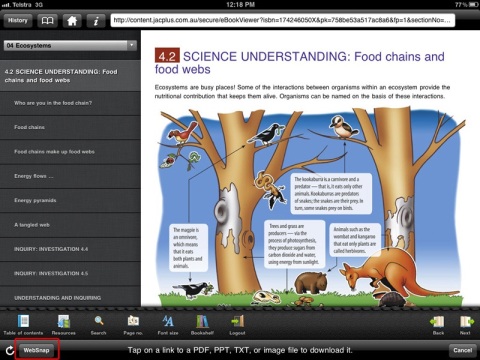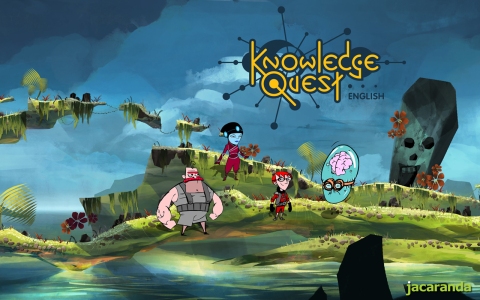Archive for January, 2012|Monthly archive page
Another brick in the (classroom) wall?
I started my career in the late 1980’s as a Media Studies teacher in Queensland.
One of the Year 12 assessment tasks back then involved students producing a documentary about their school. In doing so, students were required to use different film techniques to create a biased interpretation of their school. They had to choose one of the following scenarios:
- Scenario 1 – portray the school as a holiday camp, or,
- Scenario 2 – portray the school as a prison.
Most students chose the ‘prison’ option. They produced a powerful montage of images – camera shots of classroom taken through bars and fences to portray imprisonment, low angles of teachers to make them appear menacing, images showing rows of desks inhabited by bored students, edited interviews of students lamenting about their existence at school.
And most students chose Pink Floyd’s 1980’s hit Another Brick in the Wall as the music soundtrack. By the end of this task, I was well and truly over the students in the song chanting ‘we don’t need an education‘!
What fascinated me most was the reason why students chose the prison option. So one day I ask them why.
They said that they enrolled in the Media Studies course because:
- They wanted to learn in ways other than the ‘pen and paper’ learning that occurred in traditional subjects
- They were not tied to rows of desks (as portrayed in the documentaries they produced).
What these students were really saying was ‘we do need an education‘ – but they want to learn in a ways that are different to traditional schooling.
In the 2012, we have more technological tools that appeal to how our students learn best.
What will your students say about learning in your class in 2012?
Will they be another brick in the wall?
Or will you break down the classroom walls?
On my holidays I went to……..
An old favourite for some teachers is to start the year by asking their students about their holidays. Students would then sit down and write a few paragraphs on their holiday highlights.
Why not ask your students to add their holiday highlights in myWorld Atlas. Where did they go? What did they do?
They can easily add a pin to their globe to show the location of their holiday. Then they can create a multimedia display of the features of their holiday.
To do this:
- Select Add a pin
- Move the pin to the location of the holiday on the globe
- Select Save
- Add notes, images, videos and weblinks.
A case study will then be added to the pin.
If your students are connected to you in myWorld Atlas Teacher Edition, you will see all of the pins and case studies on your globe.
You can take this a step further by showing all of these pins on a data projector. Students can then select their pin and speak briefly to the class about their holiday.
Students can even go as far as sharing the news of their holiday online with classmates and friends.
Go to www.myworldatlas.com.au and click on the orange pins to see examples of case studies that were created by students in 2011.
Creating a holiday case study is a good way to introduce myWorld atlas to your students.
It will also help you to learn a little bit more about your students at the start of the year.
Bloom’s taxonomy and productivity apps
I have received many enquires from teachers in the last few months about productivity tools that can be used by students on iPads.
Below is a table of productivity apps I have created to help you map out tasks for your students according to Bloom’s taxonomy.
These apps can be used in conjunction with eBookPLUS on your iPad.

Jacaranda’s myWorld Atlas app will be released soon. This app can be also used by your students at various levels in Bloom’s taxonomy.
Please let me know of any apps you can add to my Bloom’s taxonomy app list.
Getting to know your students with assessON
A former colleague said to me once that good teachers always start the school year by finding out what their students know.
assessON is the perfect tool to find out what your students already know before you start teaching a new topic or unit.
There are three types of assessments in assessON:
- Readiness (FOR learning)
- Progress (AS learning)
- Achievement (OF learning).
By creating a Readiness assessment, you can see what students already know about a topic area.
For example, as a Maths teacher you are about to start teaching Real numbers. By creating an assessment in assessON you can find out what prior knowledge your students bring to the classroom.
There is no marking for you to do – assessON will mark everything for you and give you a graphical representation of where your students are at. This will inform your planning of lessons.
When school starts in the next week or so, make sure that you first learn your students’ names.
Then find out, with assessON, what they already know.
myWorld Atlas nominated as finalist at AIMIA Awards!
Jacaranda’s myWorld Atlas has been nominated as a finalist in the following categories at the 18th Annual Australian Interactive Media Industry Association Awards:
This truly reflects myWorld Atlas as a ground-breaking digital learning resource and a leader in educational publishing.
Congratulations to all the Jacaranda folk who have been involved in producing this amazing interactive learning resource!
Previous myWorld Atlas posts
Using JacPLUS & eBookPLUS with your iPad
There are many teachers who have contacted me about using iPads for the first time in 2012.
Over the next few weeks I will be presenting some tips on how you can use your Jacaranda eBookPLUS titles with your iPad.
PaperPort Notes is a useful app that allows you (and your students) to annotate web pages in JacPLUS with your own notes. It is a free download from iTunes at http://itunes.apple.com/us/app/paperport-notes/id476134017?mt=8.
Nice features include:
- The facility to capture and import screenshots of eBookPLUS web content directly into your iPad
- The annotation tools (including text boxes and drawing tools)
All annotations and notes can be saved and bookmarked. Hence students can collate a record of all annotations and notes in their eBookPLUS title during the year.
- Audio recording
You can also add audio recordings of your notes.
Classroom presentation tool
PaperPort Notes allows you to prepare annotations & notes prior to a lesson. All you have to do then is connect your iPad to a data projector in class and display your saved notes.
Alternatively, you can add annotations and notes while you are presenting eBookPLUS content to your class. Hence you can use this app to turn your iPad into an interactive whiteboard.
Let the games begin
What I love about summer holidays is that you feel like a kid again.
The luxury of time and space during holidays allows you to have more fun. You play with the kids more and discover your inner child again. You also think of all those wonderful childhood memories when you were having fun.
As we get older, fun and games are relegated to the fringes – fun is something ‘trivial’ that we fit in around the seriousness of our daily adult lives. No wonder we yearn for the simple days of our childhood when we find the going is getting tough!
The good news is that fun and games are coming back more into our adult lives. Yes, 2012 is an Olympic year. But the concept of games goes well beyond the Olympics – games are now influencing the way we work and learn.
Gamification is a movement that takes fun and games away from the periphery and places it into the centre of our lives. More specifically, gamification refers to the use of game design elements to engage audiences in solving problems. These elements include high-levels of interactivity and the recognition of achievements and rewards through badges. The aim is to make learning fun and to motivate students to learn better.
Jacaranda’s Knowledge Quest engages and motivates students by putting the fun back into the learning of English skills. It is an immersive, interactive game that specifically targets NAPLAN testing.
I once taught English up to Year 10. Knowledge Quest is exactly what I needed when I was trying to make students believe that learning grammar was fun. I didn’t succeed here – my students knew I was pretending!
As for now, I am really having fun as I show teachers across Australia how the game context in Knowledge Quest can be used to learn English skills. It is wonderful to see so many teachers having fun as they jump over obstacles and navigate nouns, possessive adjectives, prepositions and verbs in an attempt to prove their grammatical prowess.
And the best part is when these teachers say that they feel like kids again!
 Leave a comment
Leave a comment










